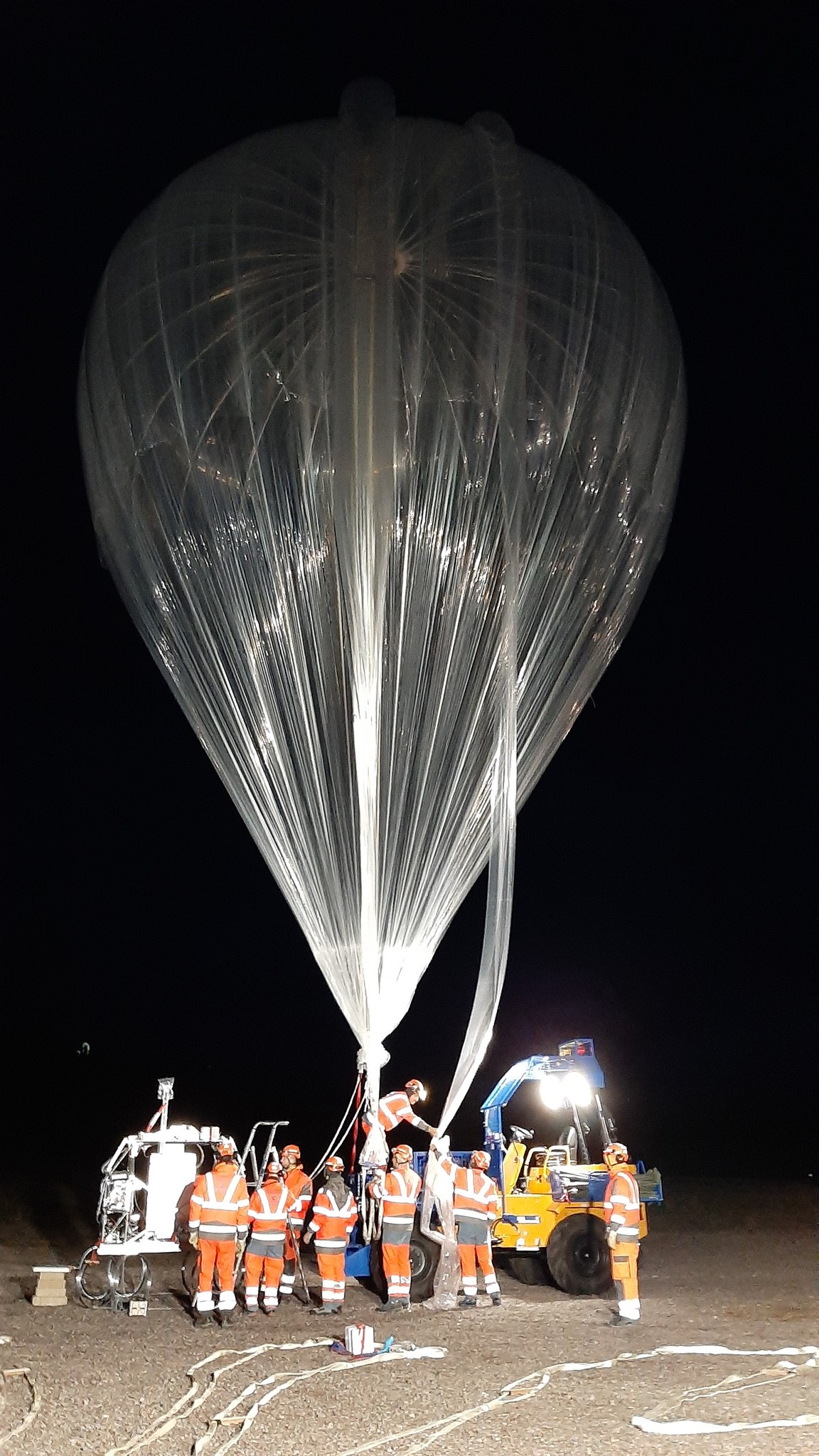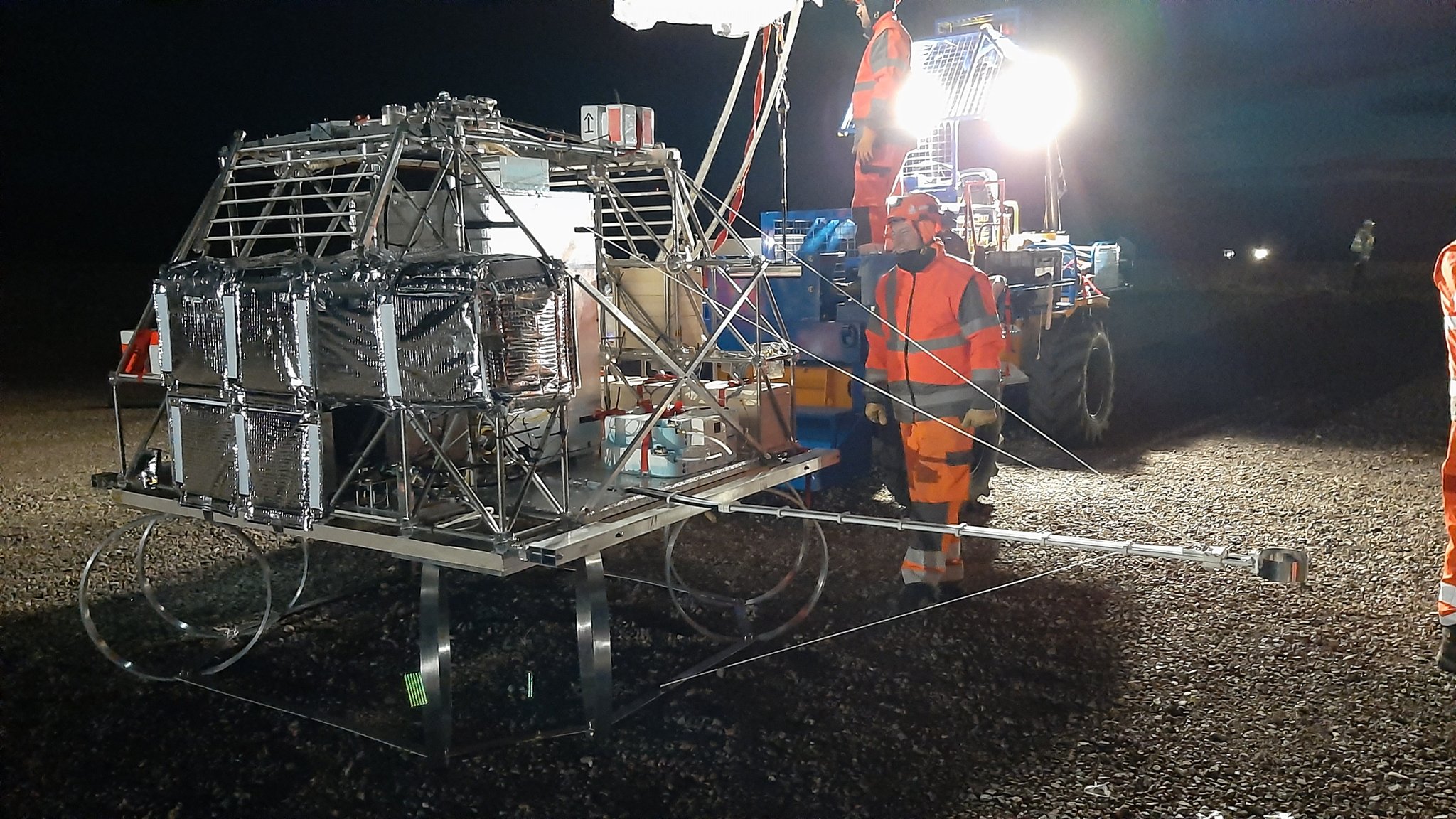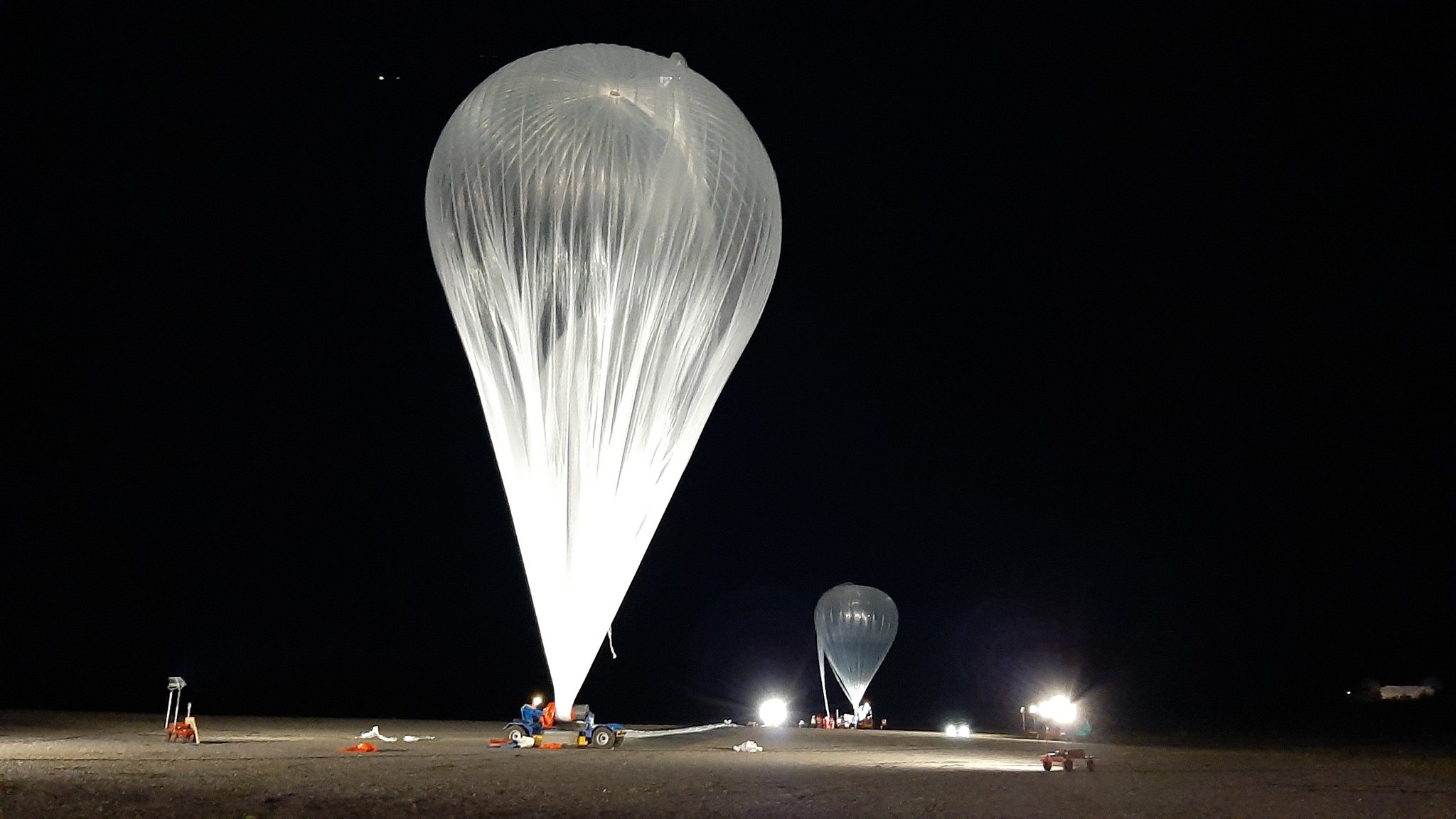Purpose of the flight and payload description
SUPER CLIMAT was a stratospheric balloon mission that combined several instruments for the measurements of atmospheric gases in the Arctic. It was performed as part of the Klimat 2021 campaign held at ESRANGE balloon base in Kiruna, Sweden. The instruments were transported in a CNES-developed balloon gondola called CARMENCITA with a total mass of aproximately 510 kgs. The flight profile of the mission required a slow descent after the balloon reached float altitude and a quick recovery after landing to secure the air samples obtained during the controled descent.
The instruments onboard were:
SPECIES a balloon-borne and airborne instrument developed by the Laboratoire de Physique et Chimie de l'Environnement et de l'Espace (LPC2E) and the Laboratoire interdisciplinaire de Physique (LIPHY). It is able to measure a wide variety of trace gases simultaneously (e.g. O3, N2O, HNO3, NH3, H2O2, HCl, HOCl, CF2O, CH4, CH2O, CO, CO2, OCS, SO2) with a wide vertical range, combined to chemical and dynamical modelling at different scales. It was born in order to replace another instrument called SPIRALE developed by LPCE but which can no longer fly. LPC2E along with CNES developed SPECIES based on the Optical Feedback Cavity Enhanced Spectroscopy (OF-CEAS) technique combined with mid-infrared quantum or interband cascade lasers (QCLs or ICLs). The instrument is usable both in balloon or aircraft and on the ground to optimize its exploitation.
AMULSE (Atmospheric Measurements by Ultra-Light Spectrometer) for CO2 and CH4 developed by the Groupe de Spectrométrie Moléculaire et Atmosphérique of the Université de Reims. It consist of a compact lightweight spectrometer based on near infrared laser technology at 2.04 µm coupled to a 6-m open-path multipass cell which allows to perform measurements using the Wavelength Modulation Spectroscopy technique. The spectrometer can make in situ measurements of the vertical profiles of the CO2 at high precision levels and with high temporal/spatial resolution.
Finally three AirCore samplers composed by a long tube which while descending from high altitude has one end open and the other closed being able to sample and retain a mole fraction profile of a gas to be analyzed after the flight. The samplers were developed by the Atmospheric Radiation Analysis group at the Laboratoire de Météorologie Dynamique.
Details of the balloon flight
Balloon launched on: 8/23/2021
Launch site: European Space Range, Kiruna, Sweden
Balloon launched by: Centre National d'Etudes Spatiales (CNES)
Balloon manufacturer/size/composition: Zero Pressure Balloon model 150z 150.000 m3
End of flight (L for landing time, W for last contact, otherwise termination time): 8/24/2021
Balloon flight duration (F: time at float only, otherwise total flight time in d:days / h:hours or m:minutes - ): 7 h 1 m
Campaign: KLIMAT 2021
Overall weight: 510 kgs
External references
- Campagne Klimat 2021, vol de nuit pour Super Climat CNES website
- CNES completes series of balloon flights focused on climate research SSC press release
15790If you consider this website interesting or useful, you can help me to keep it up and running with a small donation to cover the operational costs. Just the equivalent of the price of a cup of coffee helps a lot.




